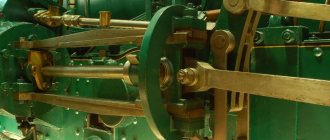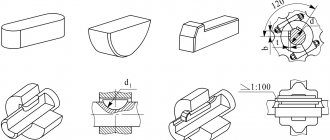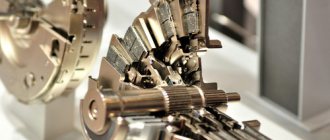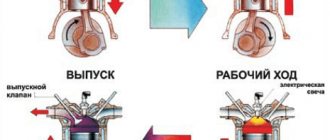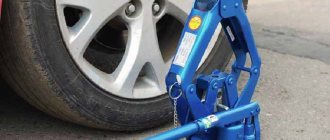Planetary gear is a type of gear used in manual and automatic transmissions. In addition to converting rotation, the planetary gear is capable of summing and distributing power. Knowing about the planetary mechanism: what it is, how it works, by what criteria the gearbox is evaluated, the structure and characteristics of the automatic transmission will become clear. In the event of a breakdown, calculating the transmission will help you choose a reliable and durable mechanism.
Design and principle of operation
A planetary mechanism is a structure of gears moving relative to the center. Wheels of different diameters are located along the central axis:
- small solar with external teeth;
- large crown or epicycle with internal teeth.
The satellites move between the wheels. Their rotation resembles the movement of the planets of the solar system. The mechanical axes of the satellites are connected to a carrier, which rotates about the central axis.
Construction of a simple planetary block:
- 1 epicycle;
- 1 sun wheel;
- 1 carrier.
The planetary mechanism is assembled in cascades of two or more links on one shaft to obtain a wide range of gears. The main kinematic characteristic of a gear transmission is the gear ratio.
The operating principle of the planetary gearbox is to lock one of the main elements and transmit rotation through the drive wheel. To stop the element, brake bands, locking clutches, and bevel gears are used. The gear ratio varies depending on the fastening scheme. It is more convenient to describe the operating principle of a planetary mechanism using an example:
- The crown is blocked.
- The shaft supplies torque to the sun.
- The rotation of the sun causes the planets to roll around with it.
- The carrier becomes a slave, indicating a lower gear.
By controlling the elements of a simple “planetary”, you get different characteristics:
| Broadcast | How does a planetary gearbox work in an automatic transmission? |
| 1 | The sun sends rotation to the carrier, the crown moves in the opposite direction. |
| 2 | The crown applies rotation to the carrier, the sun is fixed. |
| 3 | The leading carrier transmits rotation to the sun. The crown is blocked. |
| 4 | The carrier moves the crown. The sun is fixed. |
| Reverse | The carrier is blocked. The solar wheel rotates, the planets roll around and move the corona in the opposite direction. |
The efficiency η of a simple transmission reaches 0.97.
A planetary gear set with one degree of freedom becomes a planetary gear. Two degrees form a differential. The differential adds up the torques on the driven wheel coming from the main drive links.
Read
How to start a car with an automatic transmission correctly and what to do if the battery is dead
Types of planetary gears
Based on the number of stages, planetary mechanisms are divided into:
- single row;
- multi-row.
The planetary gear consisting of one sun gear, single-rimmed satellites, carrier and epicycle will be single-row. Replacing satellites with double-crown ones complicates the design, making it double-row.
The multi-stage planetary gearbox is a series of single-row units. This scheme allows you to sum up the gear ratios and get larger values. 4-speed automatic transmissions consist of two-row planetary designs, 8-speed automatic transmissions consist of four-row ones.
Automatic transmissions use circuits named after the inventors:
- The Wilson mechanism is a three-row design in which the crown of the first, carrier of the second and crown of the third rows are connected. Number of gears: 5 direct and 1 reverse.
- The Lepeletier mechanism consists of 3 coaxially located simple planetary gears. Number of gears: 6 direct and 1 reverse.
- Simpson's scheme - 2 gearboxes with a common sun gear. The second row carrier is equipped with a brake. The crown of the first row and the sun are rigidly connected to the drive shaft through two locking couplings. The mechanism implements the following modes: neutral; 1,2,3 gears; reverse.
According to the type of gear structures, planetary gearboxes are divided into:
- cylindrical;
- conical;
- wave;
- worm-type
Different types are used to transmit torque between shafts located parallel or at an angle. And also in mechanisms requiring low or high kinematic characteristics.
Detailed description of devices
Mixed planetary designs can have different numbers of wheels, as well as different gears by which they are connected. The presence of such parts significantly expands the capabilities of the mechanism. Composite planetary structures can be assembled so that the support platform shaft moves at high speed. As a result, some problems with the reduction gear, sun gear and others can be eliminated during the process of improving the device.
Thus, as can be seen from the information provided, the planetary mechanism works on the principle of transmitting rotation between the links, which are central and movable. At the same time, complex systems are more in demand than simple ones.
Characteristics of the main varieties of this device
Various types of gears are used in the design of the planetary gear set of automatic transmissions. There are three main most common ones: cylindrical, conical and wave.
Cylindrical
Gear mechanisms transmit torque between parallel shafts. The design of a cylindrical gear includes two or more pairs of wheels. The shape of the gear teeth can be straight, oblique or chevron. The cylindrical circuit is simple to manufacture and operate. Used in gearboxes, final drives, drives. The gear ratio is limited by the size of the mechanism: for one wheel pair it reaches 12. Efficiency is 95%.
Read
Which is better and more reliable, CVT or automatic?
Conical
Wheels in a conical design convert and transmit rotation between shafts located at an angle of 90 to 170 degrees. The teeth are loaded unevenly, which reduces their ultimate torque and strength. The presence of forces on the axes complicates the design of the supports. For smooth connection and greater endurance, a circular tooth shape is used.
The production of bevel gears requires high precision and is therefore expensive. Angular structures are used in gearboxes, valves, and milling machines. The gear ratio of bevel mechanisms for medium-duty equipment does not exceed 7. Efficiency is 98%.
Wave
In wave transmission there are no sun and planetary gears. Inside the crown wheel there is a flexible oval-shaped gear. The carrier acts as a wave generator, and looks like an oval cam on a special bearing.
A flexible steel or plastic wheel is deformed under the action of the carrier. Along the major geometric axis, the teeth engage with the crown to the entire working height; along the minor axis there is no engagement. The movement is transmitted by a wave created by a flexible gear wheel.
In wave mechanisms, the efficiency increases along with the gear ratio exceeding 300. Wave transmission does not work in circuits with a kinematic characteristic below 20. The gearbox produces 85% efficiency, the multiplier - 65%. The design is used in industrial robots, manipulators, aviation and space technology.
Advantages and disadvantages of planetary gears
Planetary gears outperform simple gear mechanisms of similar power due to their compact size and 2-3 times less weight. Using several planetary gears, 80% tooth engagement is achieved. The load capacity of the mechanism increases, and the pressure on each tooth decreases.
The kinematic characteristic of the planetary mechanism reaches 1000 with a small number of gears without the use of multi-row structures. In addition to the transmission, the planetary circuit is capable of operating as a differential.
Due to the alignment of the shafts of the planetary mechanism, it is easier to assemble machines than with other gearboxes.
The use of a planetary gear set in an automatic transmission reduces the noise level in the vehicle interior. A balanced system has high vibration resistance due to vibration damping. Accordingly, body vibration is reduced.
Disadvantages of the planetary mechanism:
- complex production and high precision assembly;
- bearings are installed in the satellites, which fail faster than the gear;
- As the gear ratio increases, the efficiency drops, so the design has to be complicated.
Read
Basic modes and why you need an overdrive button on an automatic machine
Wear
Regarding service life and shock absorption, in linear mechanisms of planetary systems, load distribution is noticeable among the main components.
Thermal and cyclic fatigue can be increased in them due to the limited load distribution and the fact that planetary gears can rotate quite quickly on their axes. Moreover, at high speeds and gear ratios of the planetary mechanism, centrifugal forces can significantly increase the magnitude of the movement. It should also be noted that as production accuracy decreases and the number of satellites increases, the tendency for imbalance increases.
These devices and their systems may even be subject to wear and tear. Some designs will be sensitive to even small imbalances and may require high-quality and expensive assembly components. The exact location of the planetary pins around the sun gear axis can be keyed.
Other planetary gear designs that help balance loads include the use of floating subassemblies or "soft" mounts to ensure the most durable movement of the sun or epicenter.
Planetary gear ratio
The gear ratio is the ratio of the frequency of the drive shaft of a planetary gear to the frequency of the driven one. It is not possible to determine its value visually. The mechanism is driven in different ways, which means the gear ratio is different in each case.
To calculate the gear ratio of a planetary gearbox, the number of teeth and the fastening system are taken into account. Let's say the sun gear has 24 teeth, the pinion has 12, and the crown has 48. The carrier is fixed. The sun becomes the leader.
The satellites will begin to rotate at the speed transmitted by the sun gear. The gear ratio is: -24/12 or -2. The result means that the planets rotate in the opposite direction from the sun with an angular velocity of 2 revolutions. The satellites roll around the crown and force it to turn 12/48 or ¼ of a turn. Internal wheels rotate in the same direction, so the number is positive.
The total gear ratio is equal to the ratio of the number of teeth of the drive wheel to the number of teeth of the driven wheel: -24/48 or -1/2 of a revolution is made by the crown relative to the sun with the carrier fixed.
If the carrier becomes driven with the leading sun, then the gear ratio is: (1+48/24) or 3. This is the largest number that the system can offer. The smallest ratio is obtained when the crown is fixed and torque is applied to the carrier: (1+/(1+48/24)) or 1/3.
Gear ratios of a simple planetary scheme: 1.25 - 8, multi-stage: 30 - 1000. As the kinematic characteristics increase, the efficiency decreases.
What's the end result?
An analysis of the real capabilities of tools designed for calculating and designing planetary gears suggests that the software described in this article has no direct analogues on the market. With it you can:
- significantly reduce design time;
- reduce the requirements for the qualifications of the project executor;
- perform calculations using the most modern methods at the moment;
- automatically generate design documentation.
It can also be argued that the planetary gears designed in the APM Drive module correspond to the best world analogues, because during the development of the software the most advanced algorithms in the field of calculation and design of gears of this type were fully implemented.
We hope that the inexpensive software for calculating planetary gears created at STC APM will take its rightful place in the line of products offered by STC APM to Russian industry, and that our enterprises will finally begin to produce technically complex products and step by step will conquer the machine-building market segments , previously lost. We will be glad if our developments contribute to the process of technical revival. We are confident that the tools for calculating and designing planetary gears will be especially in demand at technical universities that train personnel for the Russian economy. We are already seeing growing interest among this category of our users, and this is a guarantee that the country has a future in the field of high technology.
"CAD and Graphics" 1'2003
Selection of numbers of teeth of planetary gears
The number of wheel teeth is selected at the first stage of calculating the planetary scheme according to a predetermined gear ratio. The peculiarity of designing a planetary gear set is to comply with the requirements of proper assembly, alignment and proximity of the mechanism:
- the teeth of the satellites must coincide with the depressions of the sun and the epicycle;
- The planets should not touch each other with their teeth. In practice, more than 6 satellites are not used due to difficulties in uniformly distributing the load;
- The axles of the carrier, sun and crown wheels must coincide.
The basic ratio for selecting transmission teeth through the gear ratio looks like this:
i = 1+Zcorona/Zsun,
where i is the gear ratio;
Read
Automatic transmission diagnostics and repair
Zn is the number of teeth.
The coaxial condition is observed when the interaxial distances of the sun wheel, crown and carrier are equal. For a simple planetary gear train, the center distances between the central wheels and satellites are checked. Equality must satisfy the formula:
Zcorona=Zsun+2×Zsatellite.
In order for there to be a gap between the planets, the sum of the radii of adjacent gears should not exceed the axial distance between them. The condition of proximity to the sun wheel is checked using the formula:
sin (π/c)> (Zsatellite+2)/(Zsun+Zsatellite),
where c is the number of satellites.
Planetary wheels are placed evenly if the ratio of crown and sun teeth to the number of satellites is integer:
Zsun/s = Z;
Zcorona/s = Z,
where Z is an integer.
Basics of synthesis of planetary devices
This knowledge is needed when designing and creating machine components. The concept of “synthesis of planetary mechanisms” consists in calculating the number of teeth in the sun, epicenter and satellites. In this case, a number of conditions must be met:
- The gear ratio must be equal to the specified value.
- The mesh of the wheel teeth must be correct.
- It is necessary to ensure the alignment of the input shaft and output shaft.
- It is necessary to ensure proximity (satellites should not interfere with each other).
Also, when designing, you need to take into account the dimensions of the future structure, its weight and efficiency.
If the gear ratio (n) is given, then the number of teeth on the sun (S) and on the planetary gears (P) must satisfy the equality:
n = S/P
If we assume that the number of teeth at the epicenter is early (A), then with the carrier locked, the following equality must be observed:
n = -S/A
If the epicenter is fixed, then the following equality will be true:
n = 1+ A/S
This is how the planetary mechanism is calculated.
Tips for selecting a planetary gearbox
Before choosing a planetary gearbox, an accurate calculation of the load and operating modes of the mechanism is carried out. Determine the type of transmission, axial loads, temperature range and standard sizes of the gearbox. For heavy special equipment that requires high torque at low speeds, a gearbox with a high gear ratio is chosen.
To reduce the angular speed without reducing the torque, a drive with an electric motor and gearbox is used. When choosing a gear motor, consider:
- operational load;
- output shaft torque;
- rotation speed of input and output shafts;
- electric motor power;
- installation execution.
Typical faults: when is automatic transmission gearbox repair required?
The service life of the planetary mechanism directly depends on the operating style of the vehicle and the quality of maintenance. Most often, premature failure of the planetary gears occurs on crossovers or SUVs, which often travel off-road.
Typical malfunctions of a planetary gearbox include:
- Wear of gear teeth or differential elements.
- Development of splines or twisting of axle shafts.
- Bearing wear.
- Deformation of the gearbox housing or leakage of working fluid.
As a rule, all of the listed malfunctions have a complex factor of origin and arise as a result of the natural wear and tear of the units during high mileage of the transmission, or as a result of aggressive operation of the vehicle. Most often, the need for premature repair of a planetary mechanism arises due to systematic overheating of the transmission, prolonged lack of maintenance, or the use of low-quality or unsuitable oil.
The most common signs of planetary gear malfunction:
- Increased vibration load of the body when accelerating.
- Extraneous sounds when the vehicle is operating in the gearbox area.
- Uneven rotation or runout of the output shaft.
Note! When the first signs of a malfunction appear, it is recommended to immediately contact a service center for diagnostics or troubleshooting. Timely identification of the problem allows the malfunction to be eliminated at the local level, which significantly reduces the cost of repairs and increases the service life of the transmission.
Application area of planetary gears
The planetary diagram is used in:
- gearboxes;
- automatic and manual transmissions;
- in aircraft drives;
- differentials of cars, devices;
- driving axles of heavy equipment;
- kinematic diagrams of metal-cutting machines.
A planetary gearbox is used in units with variable gear ratios, braking the carrier. In tracked vehicles, the elements in the planetary mechanism do not block for the addition of power flows.
Where is planetary gear used in a car?
But still, the topic of the article is the use of planetary gears in cars. Usually we are talking about a vehicle differential, which is installed on all drive axles. This is where systems that do not provide rigid fixation of individual elements in relation to each other are best used.
Another area of application is hydromechanical transmission. It is also based on the basic principle of a planetary mechanism, which involves the mutual rotation of three types of gears. But the design of such gearboxes is noticeably more complicated than that described above, since the minimum number of forward gears only is 5-6. It is obvious that one mechanism simply cannot cope with solving such a problem.
Important
Modern automatic transmissions are complex technical devices that are formed by combining several planetary gears into a system.
This approach allows you to get a wide range of gear ratios at the output - starting from 0.7 to 1 (if we are talking about high gear) and ending with 4.5 to 1 (for low gear). The given ratio is deciphered extremely simply: 0.7 to 1 means that 0.7 revolutions of the input shaft give one revolution of the output shaft.
